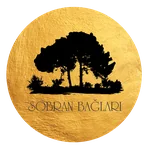Welcome
to the Land of the Golden Vines
Ready to embark on a journey filled with history, taste and natural beauty in the birthplace of viticulture?
Across the vineyards



Lydia Wine Route
This website aims to promote the unique heritage of the Lydia Wine Route, strengthen ties with our producers and invite visitors to the centuries-old winegrowing culture through tourism routes. What you can find on our website:
- Most authentic producers in the region and their products,
- Tourist routes specially designed to explore the region,
- Historical significance of the Lydian Civilization and their cultural heritage in the region,
- Map of the Wine Route and tour options.
Unique flavours spread around the world from the golden vines of Lydian lands!
Discover the stories of the winemakers in the region and enjoy some of their fine wines.



Discover the cultural richness and natural beauty on a journey across the vineyards!
Our routes are carefully curated to offer a memorable experience of nature, history and taste.
Tasting Tours
Join us for a delightful tasting tour and enjoy some of the region’s most exquisite flavours.
Harvest Events
Immerse yourself in nature and enjoy the finest fresh tastes in the captivating atmosphere of the vintage.
Lydia is historically known as a major centre of viticulture and winemaking. This wine route provides a 360-degree tourism experience in a setting that carries the traces of a centuries-old cultural heritage.


Thyateira Hill Tombs
Thyateira (Thyatira) is the ancient name of Akhisar district. The city was among the most prominent settlements of Lydia and the Kingdom of Pergamon. The city was known under this name until the Byzantine period during the Roman Empire. The city of Thyateira is also home to one of the first seven churches of Christianity established in Western Anatolia by St Paul.
Today, parts of the city’s ruins can be seen at the Hill Tombs site in the centre of Akhisar.
(Source: manisa.ktb.gov.tr)

Akhisar Museum
Akhisar Museum is home to a rich collection of archaeological and ethnographic artefacts, with 1451 items on display across 11 distinct sections. In the Archaeological section of the museum, fossils between 11-18 million years old, idols and hand tools, Yortan ceramics dating back to 6000-3000 BC are exhibited. The exhibition also includes ceramics, silver pots and a golden calf dating from 700-500 BC, ceramics from the Hellenistic Period, figurines, oil lamps, tomb steles and glass works belonging to 500 BC - 200 AD.
(Source: muze.gov.tr)

Manisa Museum
The city of Manisa (Magnesia) was founded and developed on the northern skirts of the mountain known since antiquity as Mount Sipylus. It is one of the few settlements to have survived uninterruptedly to this day. Muradiye Madrasah, built by Sultan Murat III in 1585 and Mimar Sinan’s only work in the Aegean, has been welcoming visitors as Manisa Museum since 1937. The locals brought and stored all movable cultural heritage found within the provincial borders of Manisa and put them on display for the first time in the madrasah section of the Muradiye Complex, transformed into a museum on 29 October 1937 with a ceremony attended by the governor of the time, Murat Germen.
(Source: muze.gov.tr)

The Weeping Rock (Niobe)
Among the stories set in Mount Spil, rising to the south of the city of Manisa, is the one about Niobe. Niobe, the daughter of Tantalos, was born in Manisa, and according to the legend, she and the goddess Leto spent their childhood in this region. Niobe, who later married Amphion, King of Thebai, had 14 children: seven girls and seven boys. Leto, her childhood friend and wife of Zeus, had two children named Apollo and Artemis. Niobe takes pride in her children at any opportunity. One day, Leto hears Niobe boasting about her having many children whilst Leto only having two. The goddess grows angry and asks her children to punish Niobe. All of Niobe’s children are killed by the arrows of Apollo and Artemis. Niobe weeps for days over the bodies of her children. Zeus eventually takes pity on Niobe and turns her into stone at the foot of Mount Sipylus, bringing an end to her suffering.
(Source: manisa.ktb.gov.tr)

Mount Spil National Park
Mount Spil (Manisa Mountain or Mount Sipylus) extends in the east-west direction and forms a separate mass at the northwestern end of Bozdağlar on the Gediz basin. This limestone formation reaches a height of 1513 metres. With its geological and geomorphological limestone rocks, canyon valleys, doline lakes, lapyas, caves, diverse flora and wildlife, the mountain holds the immovable cultural heritage of mythological stories at its heart. For these reasons, it was declared a National Park in 1968. Mount Spil is home to more than 120 endemic plant species, making it an invaluable natural treasure. Manisa Tulip undeniably stands as the most famous of the nearly 70 medicinal plants found on the mountain.
(Source: kulturportali.gov.tr)
Karabel Monument
The Hittite monument Karabel Rock Relief is located near the Kemalpaşa district of İzmir and on the Kemalpaşa - Torbalı highway. This relief depicts the Egyptian king Sesostris, according to the historian Herodotus. Herodotus states that the king raised columns in the countries he subjugated, of which two were located on the coasts of Western Anatolia. He adds that one of them is on the Fokaia (Foça) - Ephesus (Efes) road and the other is on the road from Sardes to İzmir. The Karabel Rock Relief displays a male figure in typical Hittite clothes with his right foot extended forward in a niche carved on a smooth rock in low relief.
(Source: kulturportali.gov.tr)

The Ancient City of Sardes
It is believed that Sardes was founded by a king named Meles on the northern slopes of the hills west of Bozdağlar (Mount Tmolus) along the banks of the Sart Stream (Pactolus) in the Gediz (Hermos) basin. The city of Sardes, the capital of the Lydian Kingdom, became a centre of Persian satrapy after the Lydian Kingdom was defeated by the Persians in the 6th century BC. The city retained its significance during the Hellenistic and Roman periods and became an important episcopal centre during the Byzantine period. The Temple of Artemis is possibly located in the sanctuary of an ancient Cybele cult. Construction of the temple began in the Hellenistic period and a chapel was added to the southeast corner in the 4th century.
(Source: muze.gov.tr)
Bintepeler Tumuli
Located between the districts of Salihli, Ahmetli, Saruhanlı and Gölmarmara, the archaeological site known as Bintepeler contains 115 tumuli (mounds formed by piling soil, containing a grave or cemetery) where Lydian nobles and members of the royal family were buried in the 6th and 7th centuries BC. The Ministry of Culture and Tourism has initiated efforts to include the Lydian Tumuli, reputed to be the pyramids of Anatolia in Salihli district of Manisa, on the permanent UNESCO World Heritage List.
(Source: www.aa.com.tr/tr/kultur-sanat)
St Jean Church
St Jean, one of the 12 apostles of Jesus Christ, is regarded among the most important figures of Christianity. It is believed that St Jean, also known as St John, wrote the “Gospel of John” in Ephesus. Another important testimony to the early Christian period is the basilica built over the tomb of St Jean. It is said that after the crucifixion of Jesus Christ, his favourite apostle, St Jean deemed Mother Mary’s stay in Jerusalem inconvenient and took her to Ephesus. Rumour has it that Mother Mary lived until the age of 101 on Bülbül Dağı (Mount Nightingale), and St Jean buried her on this mountain in a place known only to himself. Built by the Byzantine emperor Justinian in the 1st century AD on the tomb of St Jean, the church of St Jean (St John) is one of the most monumental buildings of the period.
(Source: muze.gov.tr)

Divlit Volcano
The Divlit volcano lies on the “Gediz Graben,” one of the largest tectonic rifts running from east to west in the Aegean region. As a result, fascinating landforms have been created by the combination of volcanic activity, tectonic movement, river flow and atmospheric events. Badlands and fairy chimneys are particularly common on volcanic cones, old volcanic structures, lava plateaus, lava flows, cornices, volcanic and lagoonal sediments in the villages of Kaplan and Sandal and in the north of Kula district.
(Source: Wikipedia)
Kula Geopark
Since antiquity, Kula Geopark area has attracted travellers and researchers with its natural, geological, cultural and archaeological richness, and become the subject of their works. A rich natural heritage of fairy chimneys, karst caves, canyons and volcano cones surround Kula and its periphery. Natural and cultural assets like prehistoric human footprints, volcanic structures and formations are of great national and international value for scientific, cultural and recreational purposes. The Kula Geopark area is home to a rich geological diversity that sheds light on the 200-million-year history of the earth.
(Source: tr.wikipedia.org)

Kula Fairy Chimneys
Kula and the surrounding area are geologically volcanic structures. Fairy chimney-like natural structures formed by the effects of temperature changes, rain, wind and erosion can be seen on the upper part of the Gediz River in the Burgaz region. Together they create a truly magnificent landscape in pastel tones within the Gediz Valley.
Traditional Houses of Kula
Kula houses belong in the category of traditional wooden buildings known as Turkish Houses which can be seen in almost every region of the Ottoman Empire during the 18th century. These houses represent successful examples of Ottoman art of the period in terms of their plan and organisation, as well as the use of wood, plaster and pencil work. Continuation of this building type in the 19th century gave Kula a complete Ottoman urban texture. Kula has reached the present day undisturbed for various reasons. Today, it is a “Monument City” in terms of architecture thanks to its buildings.
(Source: jeoparkbelediyelerbirligi.com)

Uşak Archaeological Museum
In the museum exhibition hall, idols from the Old Bronze Age, beak-spouted jugs, stone axes can be seen. Other artefacts on display are Hellenistic and Roman Age pottery and glass works. Artefacts on open display include tomb steles, offering steles and atonement inscriptions from the Roman Period. The rest of the exhibition hall is dedicated to the Lydian treasures known as the Kârun Treasure. These artefacts were originally smuggled from nearby Uşak to the US in the second half of the 1960s and recovered in 1993 following a lawsuit filed by the Ministry of Culture.
(Source: muze.gov.tr)

Ephesus and the House of Virgin Mary
Ephesus is the majestic capital of Anatolia in antiquity. This mega ancient city, a UNESCO World Heritage Site, and its outstanding architectural masterpieces have stood for thousands of years. The Temple of Artemis, one of the seven wonders of the ancient world, carrying on the Anatolian tradition of the mother goddess (Cybele), is also located in Ephesus, adding to the importance of this ancient city. The Ephesus Archaeological Site exhibits symbols of high-level urbanisation, architecture and religious history from various civilisations, especially Hellenistic and Roman.

Aydın Archaeological Museum
The museum was established in Zafer Primary School in 1959. Museum services were maintained in a classroom for a long time. Aydın Archaeology and Ethnography Museum gradually acquired a rich collection of artefacts from the centre and districts of Aydın. The garden exhibits stone artefacts belonging to various periods from ancient cities such as Tralleis, Magnesia, Alinda, Alabanda, Nysa, Amyzon, Piginda, Harpasa, Myus, Pygela, Orthosia, and Mastaura. The museum halls consist of three sections: Archaeological Section, Coin Section and Ethnographic Works Section.
(Source: muze.gov.tr)

The Ancient City of Nysa
Nysa is one of the Carian cities within the borders of the Sultanhisar district of Aydın. The most important information about the city comes from Strabo, who spent most of his life in Nysa. According to him, the site consisted of two parts. The remains of the Byzantine structures and the library were in the north. In the north of the library was the theatre, which held a particular significance with the reliefs seen in the stage building. The city necropolis was on the road to Acharaka, a small settlement in the west.
(Source: muze.gov.tr)









